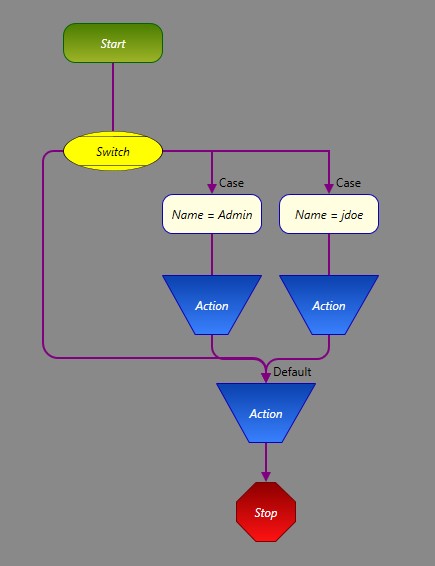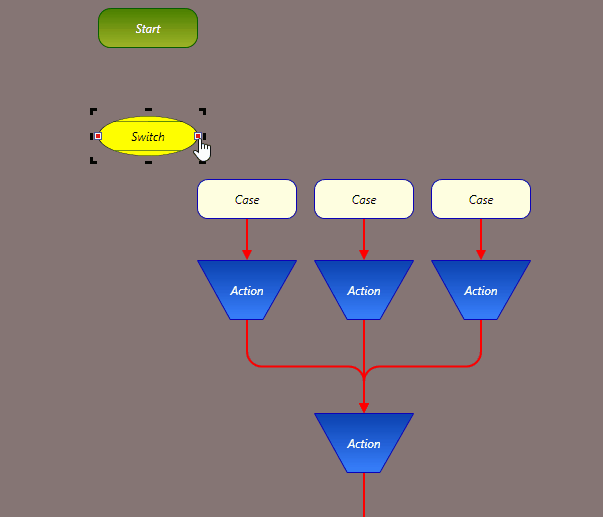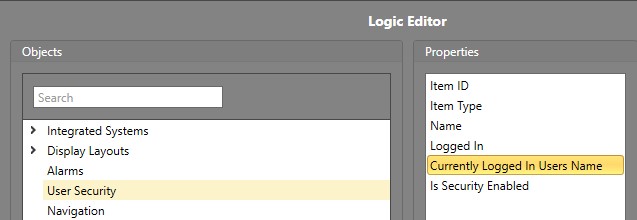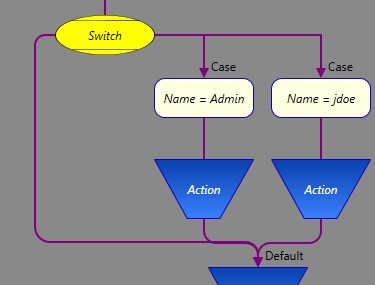Switch and Case Blocks
The Switch and Case blocks are used together to make a decision on what path to take in a Workflow. They execute a sequence of blocks if a logical expression matches one of the specified cases. If no case matches, a default path is used.
The Switch block contains a configured logical expression. The Case blocks are configured with potential results for what this expression could evaluate to. If the expression evaluates to that value, the Case's exit path will be used. The Switch block can connect to any number of Case blocks. If the result does not match any of the Cases, the Default exit path will be used instead.
To add a Switch and Case to your Workflow, follow the steps below. To view an example these blocks in use, view the example section.
Example
In this example, we will create a Workflow using the Switch and Case blocks to determine what action to take when a user is idle. Based on the logged in user, different actions will be taken.
At the end, our Workflow looks like this:





